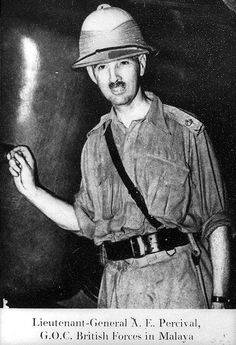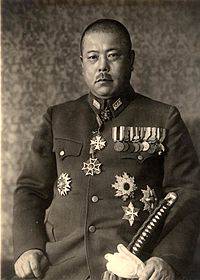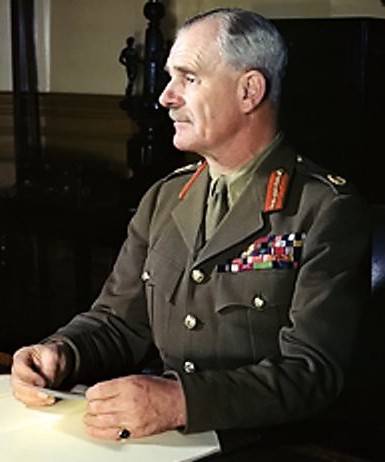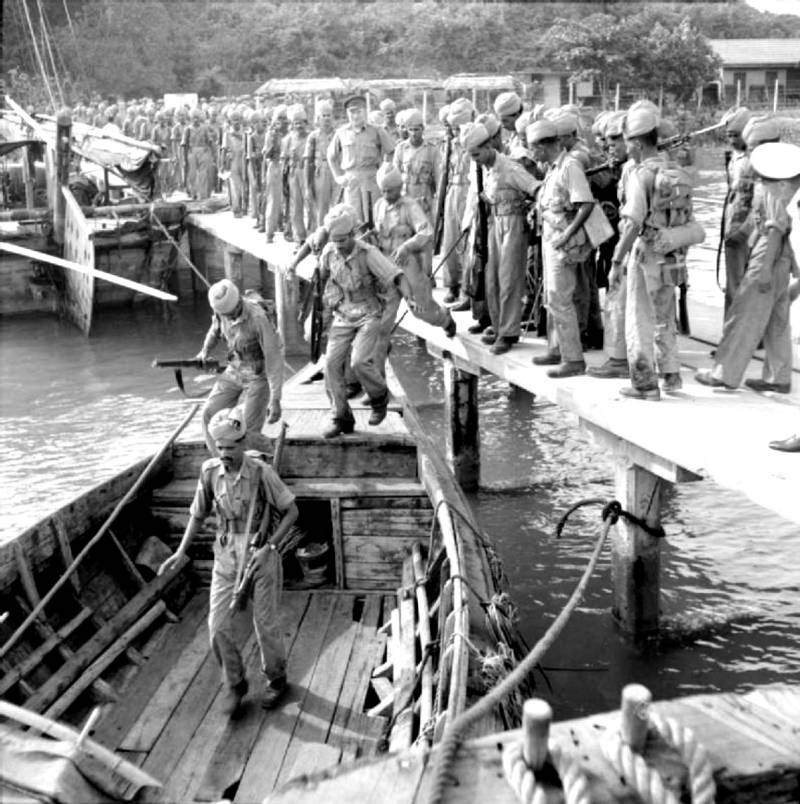Malay operation. Britain's crushing defeat in Southeast Asia
The favorable geographical position of the Malay peninsula allowed the capture of the seaport of Singapore and the penetration of Indonesia (then the Netherlands East Indies). In addition, Malacca was rich in natural resources, which also attracted the Japanese leadership. However, the seizure of Malacca would not have been possible without a direct clash with the armed forces of Great Britain and Australia deployed on the peninsula and at the naval base in Singapore. However, in the fall of 1941, the Japanese command began to develop the Malay operation. To carry it out, it was necessary to concentrate significant forces in the nearby areas of Indochina, as well as to achieve the consent of Thailand to use its airfields and ports in the interests of Japanese troops.
In turn, the Allied Command did not anticipate that Japan would be able to attack several targets in the Asia-Pacific region at once. The British leadership mistakenly assessed the potential of the Japanese imperial army and believed that the Japanese would not be able to hit in several places. Such self-confidence cost the Allies dearly. On the night of December 8 1941, Japan attacked the territory of Thailand. Several units of the Thai army put up fierce resistance to Japanese troops, but at noon, Prime Minister of Thailand Major General Pibunsongram ordered a cease-fire at noon. A truce was concluded with the Japanese, after which the Japanese army was able to use the territory of Thailand to attack Malaya and Burma.
- Indian soldiers in Malaya, 1941.
By the time of the events described, British troops in Malacca were very few. Back in 1920's The Malay Command of the British Commonwealth was formed. He was tasked with defending the peninsula of Malacca and Singapore. Since the conflict with France or the Netherlands was virtually eliminated, and Thailand would hardly have attacked British possessions, the number of troops subordinate to the Malay Command was not significant. British units and formations were deployed in Singapore, Kuala Lumpur, Penang, Serembane and Taiping. With the beginning of the Second World War, the British command decided to increase the number of troops of the Malay Command at the expense of the British Indian Army. November 18 The Malay Command 1940 was reassigned to the British Far Eastern Command.
On the Malacca Peninsula, in Singapore and in Sarawak (the northern part of the island of Kalimantan), British and Australian troops were stationed with a total strength of 88 thousand people, including 73 thousand British and 15 thousand Australian troops. Most of the British troops were soldiers of the colonial forces - 37 thousand Indians and 17 thousand Malays. The British in the troops of the Malay command, there were only 19 thousand people. The 3rd Indian Corps as part of the 9th Indian Infantry Division (8th Indian Infantry Brigade and 22nd Indian Infantry Brigade), 11th Indian Infantry Division (6th Indian Infantry Brigade), and 15 Indian Infantry Brigade, 28th Gurkha Infantry Brigade, Communications Brigade, 8th Australian Division (22nd and 28th Brigades). Aviation The Malay command had 158 aircraft.
 All these forces were commanded by Lieutenant General Arthur Evans Percival (1887-1966), an experienced officer who passed all military service levels. In the 27 years, at the very beginning of the First World War, Percival, who had previously served as an ordinary civilian clerk, enlisted as a volunteer in the army, underwent accelerated courses and received the rank of second lieutenant. He participated in hostilities on the territory of France, was wounded, awarded the Military Cross. Already in 1917, he became the battalion commander with assignment of the temporary rank of lieutenant colonel (temporary ranks imply that after leaving the post the officer returns his former rank, that is, the lieutenant appointed by the battalion commander and received the rank of lieutenant colonel, again becomes a lieutenant). After the war, he studied at the Staff College, participated in the intervention of British troops in Russia, where he served as deputy commander of the 45 regiment of the Royal Fuzileras. Then Percival served as company commander in Ireland, participated in operations against the IRA. After graduating from Headquarters College in 1924, he received the rank of major, then, in 1929, he was again given the rank of lieutenant colonel. In 1930-1931 Percival studied at the Naval College in Greenwich, then served in the General Staff. In 1936, he was finally given the rank of colonel and was appointed chief of staff of the Malay Command. After the outbreak of World War II, Percival served again in France - commanded by the 43 (Wessex) Division. In April, Percival, 1941, was given the rank of lieutenant general, after which he assumed the post of commander-in-chief of the Malay Command.
All these forces were commanded by Lieutenant General Arthur Evans Percival (1887-1966), an experienced officer who passed all military service levels. In the 27 years, at the very beginning of the First World War, Percival, who had previously served as an ordinary civilian clerk, enlisted as a volunteer in the army, underwent accelerated courses and received the rank of second lieutenant. He participated in hostilities on the territory of France, was wounded, awarded the Military Cross. Already in 1917, he became the battalion commander with assignment of the temporary rank of lieutenant colonel (temporary ranks imply that after leaving the post the officer returns his former rank, that is, the lieutenant appointed by the battalion commander and received the rank of lieutenant colonel, again becomes a lieutenant). After the war, he studied at the Staff College, participated in the intervention of British troops in Russia, where he served as deputy commander of the 45 regiment of the Royal Fuzileras. Then Percival served as company commander in Ireland, participated in operations against the IRA. After graduating from Headquarters College in 1924, he received the rank of major, then, in 1929, he was again given the rank of lieutenant colonel. In 1930-1931 Percival studied at the Naval College in Greenwich, then served in the General Staff. In 1936, he was finally given the rank of colonel and was appointed chief of staff of the Malay Command. After the outbreak of World War II, Percival served again in France - commanded by the 43 (Wessex) Division. In April, Percival, 1941, was given the rank of lieutenant general, after which he assumed the post of commander-in-chief of the Malay Command.Japan planned to invade through Malaysia through Thailand, and then capture both the Malacca Peninsula and Singapore itself. To implement this plan, the forces of the 25th Army were concentrated as part of the 5th, 18th, 56th Infantry Divisions, the Imperial Guard Division, 3rd tank brigades. The number of Japanese troops destined for the invasion of Malaya was 60 thousand people. The Japanese Air Force deployed 459 aircraft of the 3rd Aviation Group in this region. Maritime support was provided by the Malay Operational Association, which included 9 cruisers, 16 destroyers, 16 submarines, 158 naval aircraft. The command of the ground forces was carried out by the commander of the 25th army, General Tomoyuki Yamashita (1885-1946, pictured), a professional military man who had previously served as chief of staff of the Kwantung Army in Manchuria.

Early in the morning of December 8, Japanese troops began their landing operations on the Malacca Peninsula. This happened at the same time as the attack of Japan on Pearl Harbor. Japanese aviation from Indochina attacked British airfields in Malaika and Singapore.
The main forces of the Japanese troops invaded Malaya from the territory of the Thai border province of Pattani. Thus, the advantage of the first strike turned out to be among the Japanese, since the British command did not dare to launch a preemptive strike, violating the neutrality of Thailand. Already in the first two days of the Malaysian operation, Japanese aircraft destroyed one-third of British aircraft. In the evening of December 9, the naval unit of the United Kingdom naval force left Singapore, which included the battleship Prince of Wales and the battle cruiser Ripsals. Japan sent the 2 battleship, 3 cruisers and destroyers against him. The aircraft of Japanese aviation bombed British ships, sinking the battleship Prince of Wales and the cruiser Ripals. 840 people died. Japanese aviation losses accounted for all 5 aircraft. After this defeat, the troops of the British Commonwealth were left without substantial maritime support, since there were no more battleships in the waters west of Hawaii. At the same time, the ground units of the Japanese army quickly moved along the Malacca Peninsula, forcing the British commander, General Percival, to withdraw its troops to the southern province of Johor. Japanese troops were rapidly moving south, and the British were retreating. 8 January 1942 of the year in the battle of the River Slim, British troops lost about 4 thousands of people.
 This serious defeat raised the question of whether the Malaysian command would be able to keep the defense until reinforcements arrived from the ports of the Middle East. The Far Eastern Command was abolished, and in its place was created the ABDA — the Command of the American, British, Dutch and Australian armed forces with headquarters in Java. His commander in chief was General Archibald Wavell (1883-1950, pictured), who previously commanded the British forces in the Middle East and by the beginning of 1941, practically freed North-East Africa from Italian forces. General Wavell decided to strengthen the defense of Johor. 11 January, the British left Kuala Lumpur. Meanwhile, the Japanese broke through to the roads of Johor and transferred two new divisions there, which made it possible to overcome the resistance of the Australian troops. January 21 British Commonwealth forces 1942 were forced to leave Eudau. The British and Australians continued to retreat south. 31 January Japanese troops occupied Johor Bahru - the southernmost city of British Malaya. After this, the British Commonwealth troops were forced to evacuate to Singapore.
This serious defeat raised the question of whether the Malaysian command would be able to keep the defense until reinforcements arrived from the ports of the Middle East. The Far Eastern Command was abolished, and in its place was created the ABDA — the Command of the American, British, Dutch and Australian armed forces with headquarters in Java. His commander in chief was General Archibald Wavell (1883-1950, pictured), who previously commanded the British forces in the Middle East and by the beginning of 1941, practically freed North-East Africa from Italian forces. General Wavell decided to strengthen the defense of Johor. 11 January, the British left Kuala Lumpur. Meanwhile, the Japanese broke through to the roads of Johor and transferred two new divisions there, which made it possible to overcome the resistance of the Australian troops. January 21 British Commonwealth forces 1942 were forced to leave Eudau. The British and Australians continued to retreat south. 31 January Japanese troops occupied Johor Bahru - the southernmost city of British Malaya. After this, the British Commonwealth troops were forced to evacuate to Singapore. As a result of the Malaysian operation, which lasted just over a month and a half, British troops suffered a crushing situation and completely left the territory of the Malacca Peninsula. 5,5 thousands of British and Australian soldiers died, 5 thousands more were injured, 40 thousands were captured. The losses of the Japanese side were much smaller - 1,8 thousand killed and 3,4 thousand wounded soldiers and officers. Under the control of Japan was extensive and rich British Malaya. But the main strategic victory of Japan in this region was ahead - the Japanese command could not feel calm until Singapore was captured - the most important naval base of the British Commonwealth forces.
After the withdrawal of British troops to Singapore, in order to protect the base from the land invasion from the territory of Malacca, British engineering units blew up the dam that connected the island with the peninsula. Singapore was under siege. In the city, by this time, there were 85 thousands of British soldiers, of whom 70 thousands served in combat units and 15 thousands in auxiliary units. These forces, by the way, were superior to the Japanese troops of General Yamashita, who were going to strike at Singapore. But General Percival, who commanded the defense of Singapore, made another mistake - he dispersed British forces along the coast, where they became an easy target for the Japanese troops. 8 February 1942, the Japanese artillery began a massive shelling of British positions in Singapore.
On the night of February 8 and 9, units of the 18 and 5 Japanese divisions with the 21 heavy artillery division and the 1 tank regiment began to force the strait that separated Singapore from Malacca. Since the British saved electricity and turned on searchlights rarely, they did not have time to react to the crossing of the strait by the Japanese. As a result, instead of artillery fire, the Japanese were met only by fire from rifle weapons, which led the Australian infantry. On the night of February 11, the Japanese, defeating the 27 Infantry Brigade of the Australian Army, covering the destroyed dam, promptly restored its exploded areas and began to advance to the island. 12 February was captured by Ni Sung, where there was a water reservoir supplying all of Singapore. ABDA commander-in-chief, General Wavell, told Winston Churchill that he had received a message from General Percival that the Malay Command troops were no longer capable of serious enemy counterattacks.
On February 14, Japanese artillery began shelling Singapore. On February 15, the Japanese ground forces launched an offensive on the city, as a result of which the Japanese managed to take several strategically important positions. At the same time, General Percival informed General Wavell that there was one day of water left in the city, the streets were littered with corpses, and there was no way to continue the resistance. The ABDA Commander-in-Chief answered: “Whatever happens - I thank you and your troops for the brave actions of the last days.” It is noteworthy that the Japanese generals were approximately in the same demoralized state at that time. The ammunition and fuel of the advancing 25th army was almost over, so the only thing she could do if Singapore's defense lasted at least a couple of days longer was to abandon the capture of the city and move back to Malacca. But luck smiled at the Japanese. Just as the Japanese headquarters was discussing the future prospects of the operation, it was reported from the front line that a car with a white flag had arrived at Japanese positions. At 17.00 pm on February 15, 1942, General Arthur Percival personally arrived at the Japanese headquarters, carrying a white flag. Negotiations began on the surrender of the forces of the British Commonwealth, which defended the “Lion City” (namely, the name of Singapore is translated). As a result of surrender, Singapore was in the hands of Japanese troops. More than 80 thousand British and Australian troops were captured. The British army did not know of such surrenders during the Second World War. Never inflicted such crushing defeats on the European armies and fleets and Japan.
The fall of Singapore and the capture of British Malaya were a great victory for Japan in the Asia-Pacific region. As a result of these events, control of the most important British base in Southeast Asia turned out to be in the hands of the Japanese, which opened the way for Burma and the Netherlands East Indies. The victory over British troops in Malaya and Singapore had a great influence on the attitudes of the peoples of Southeast Asia, who were able to convince themselves that the invincibility of British weapons turned out to be a myth - the British Empire, which seemed invincible, suffered a serious defeat from the Asian state and lost its most important possessions. in the region. In many ways, it was this effect of the Japanese victory over British troops that subsequently led to the intensification of national liberation movements throughout the Asia-Pacific region. Singapore and Malaya were incorporated into the Japanese Empire. It was possible to free Singapore from the Japanese only after the final defeat of Japan in World War II.

Information